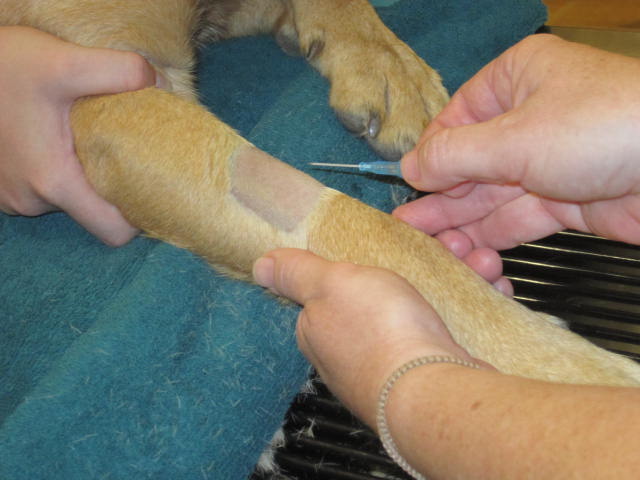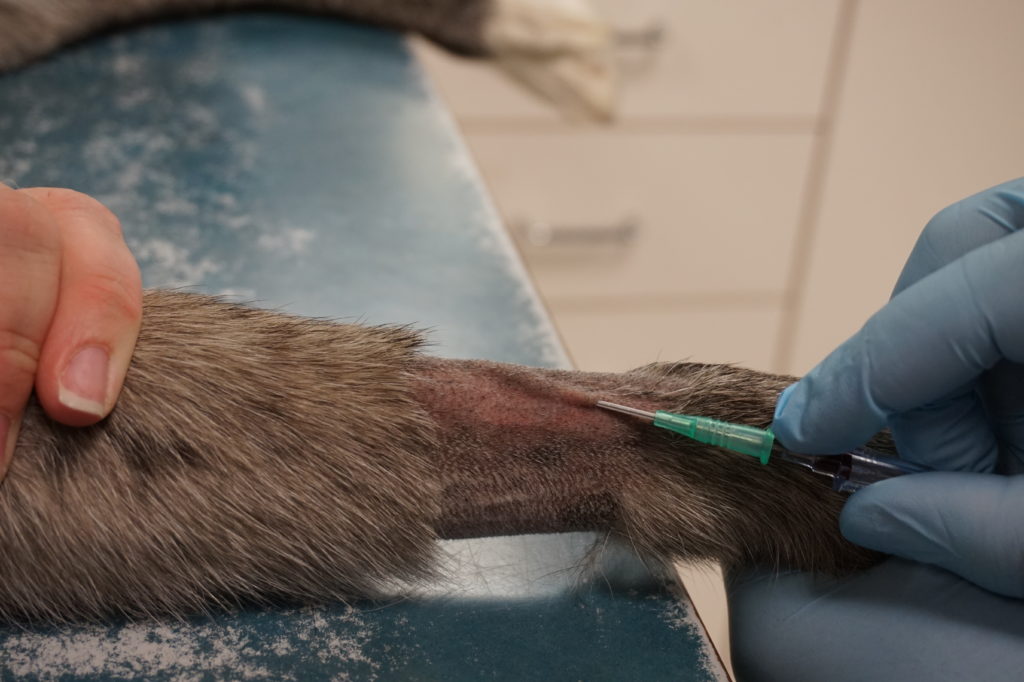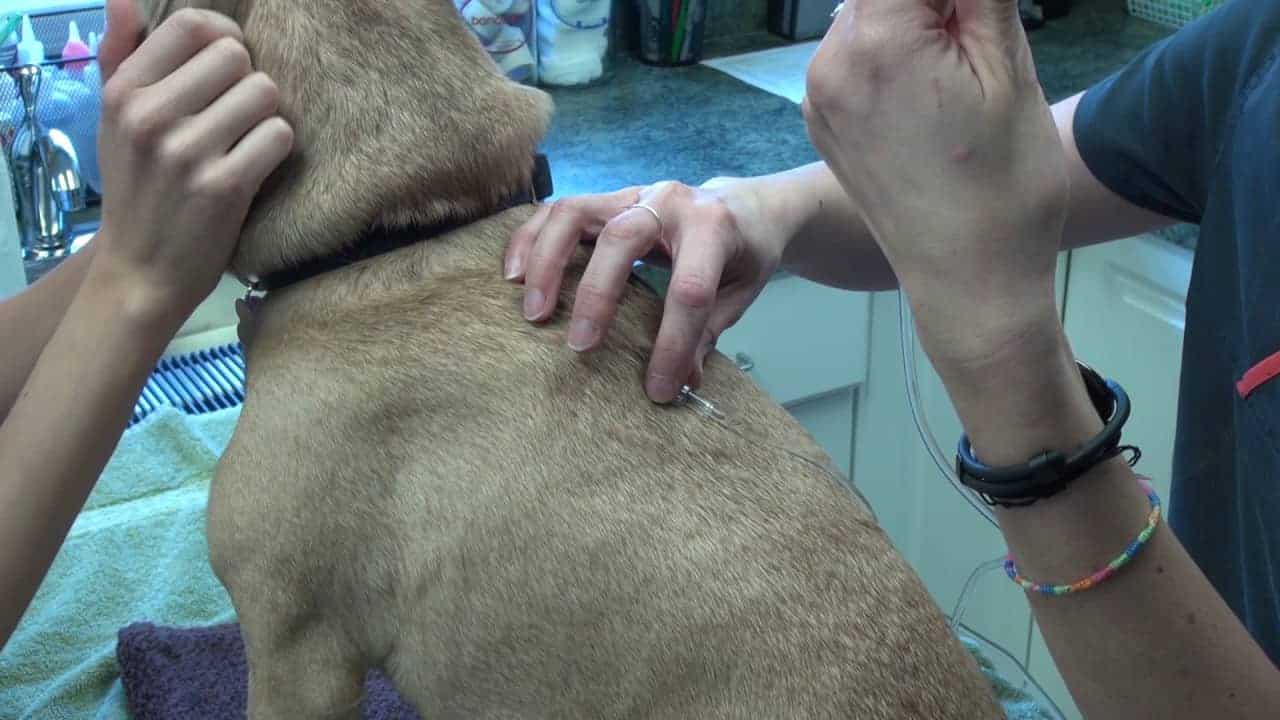It runs along the top of the foreleg of dogs and cats. Draw air into a 50ml syringe until it is full, attach the syringe to the catheter to flush out any fluid left in the system with air 4.

How To Start An Iv On A Dog generatles
Iv catheter placement 8 9 10 in a live animal, ask an assistant to restrain the animal, stabilise the limb and raise the vein.

How to put iv catheter in animals. Palpate the vein above your sterile insertion site to visualize where you want to place the catheter, making sure to keep the site sterile and clean. Pull the skin taught just ventral to the catheterization site. Iv catheter placement is a core nursing competency for veterinary technicians and allows for iv fluid therapy in emergency presentations and hospitalized patients alike.
Do not reinsert a catheter that was already used in the skin. The veins can be difficult to access and the vessels are also prone to hematoma formation. They should always be easily accessible.
With your dominant hand you should grasp firmly on to the hub of the catheter with a minimum of 2 fingers (up to 3 can be placed to help secure the catheter in your hand). Use this video clip or text with still images to review the equipment needed, the. The point of insertion into the bone is the trochanteric fossa.
Insert the catheter with needle at a slight angle to. Disconnect the t connector from the catheter 3. Your assistant should be occluding the vein by placing pressure over the vein proximal to the catherization site.
In this vetgirl online veterinary continuing education video, we demonstrate how to place an intravenous (iv) catheter in a dog or cat. Rather than placing an intravenous catheter, your veterinarian may instead elect to inject the euthanasia solution directly from a syringe via a needle into the vein ('off the needle'). Iv fluid therapy set up 1.
Catheter embolism occurs when a fragment of the catheter becomes free and is carried by blood flow until it lodges in the heart or a pulmonary artery a. Catheters are usually placed in one of three veins: Placing an intravenous catheter in dogs and cats 2 iv.
If we place an iv catheter, we flush before the fatal plus injection to assure iv catheter is still in place, and after the injection to assure the pet got all the injection. Stabilize the vein without touching the aseptically prepared skin. In addition, access to the vascular space allows for other therapies, including transfusions, medications, and.
If you are right handed, place your left thumb alongside the vein to stabilise it (but not over the sterile area). Often patients transferred to our emergency department arrive with a catheter in place. Secure catheter and extension set by placing the “strut” in the pig’s ear, curling ear around it and gently wrapping entire ear, catheter and extension set.
Join me for a brief tutorial on placing an iv catheter in a canine patient, including proper catheter site preparation and everyone's favorite, iv cath taping. Once the patient arrives, our team inspects it for placement and pate. Turn off the fluid flow by using the wheel on the giving set and also close the gate on the t connector 2.
The illustration below shows the placement of this catheter in a large dog. Replace the bung on the. The bevel of the catheter should ideally be facing upwards.
References american association of laboratory animal science. Place a piece of tape over the catheter hub, then make a loop in the catheter tubing and tape this down with a second piece of tape over the first. The use of an intravenous catheter is recommended in the majority of cases as it ensures that the euthanasia solution does not leak out of the vein which can be.
The dilators are usually tapered to a similar diameter as the catheter. We give iv fluids to a wide variety of species like this parrot with lead toxicity. Occlude the vein proximal to the catheter site to trap the embolus.
Aseptically prepare the skin over the greater trochanter (hip). Once the wire has been placed into the vein, the peripheral catheter is removed, and a tissue dilator is placed over the wire. The purpose of the dilator is to clear any fascia or debris from the path that will be occupied by the catheter;
Secure the other end of the loop above the site of the iv with a third piece of tape. Intravenous catheters are commonly used intraoperatively or in more stable hospitalized patients. I’m right handed so i hold on the catheter with my right hand.
Continue to wrap around the catheter making sure the the taps and ports of the fluid line are sticking out through the wrap. Be careful not to touch the catheter itself. Unfortunately intravenous catheter placement in birds can be challenging.
With your right hand position the catheter with the bevel facing upwards at an angle of approximately Soft wrap the leg starting from the dog's paw and moving up toward the catheter.

Spay & Neuter Littleton West Animal Hospital Colorado

How To Put An Iv On A Dog All information about Service

How To Start An Iv On A Cat CrookCounty

How To Insert An Iv Into A Dog

How Much Does It Cost To Neuter A Rabbit In Ontario All

How To Put An Iv On A Dog All information about Service

How To Put An Iv On A Dog All information about Service

Starting An Iv On A Dog generatles

How To Start An Iv On A Dog generatles

How to place a peripheral IV catheter VETgirl Veterinary

How To Put An Iv On A Dog All information about Service

How To Put An Iv On A Dog All information about Service

How To Find A Vein On A Dog Electmarkbeatty

How To Start An Iv On A Dog inspire ideas 2022

How To Insert An Iv Into A Cat


